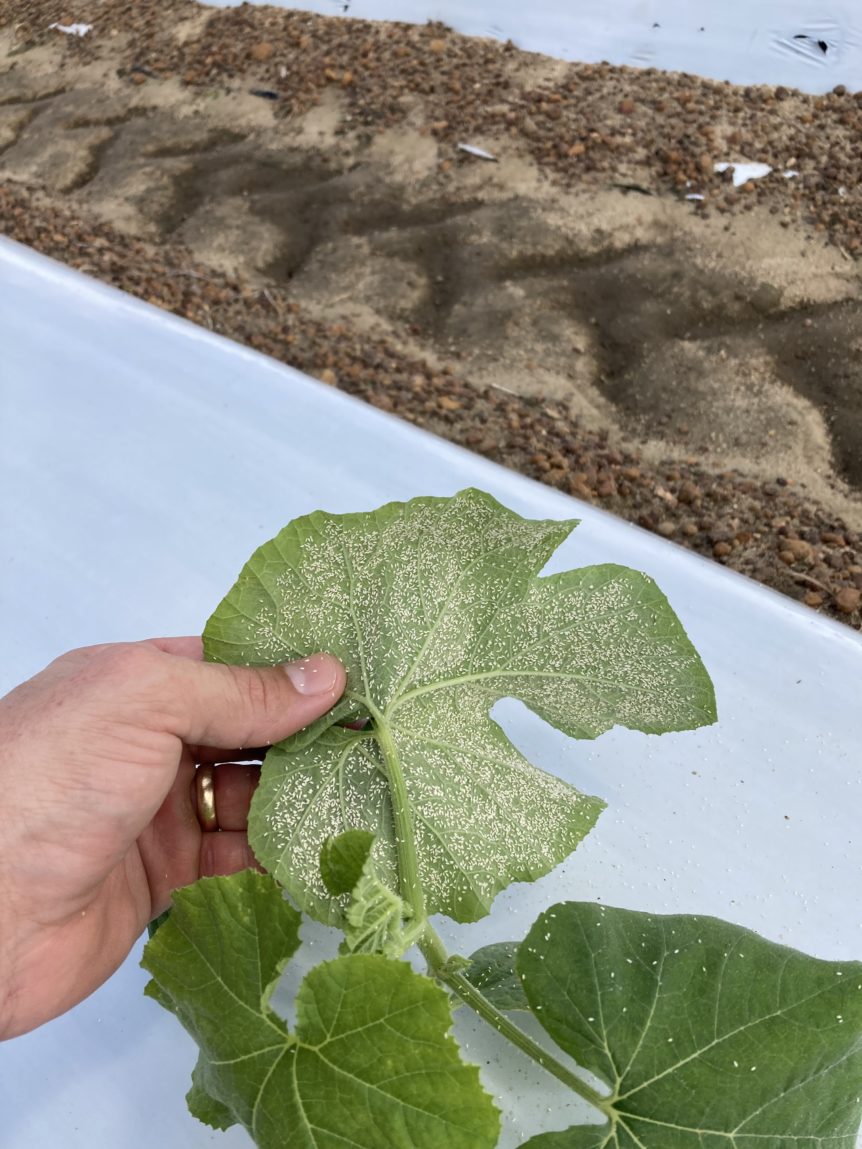
By Clint Thompson
Whiteflies are slowly migrating north through Alabama. It’s a concern for vegetable growers who are not used to managing the pest and now must implement control measures to prevent impact, especially with the viruses they can vector.
Andre da Silva, Extension specialist and associate professor of horticulture at Auburn University, highlighted the pest during his presentation at the recent Southeast Regional Fruit and Vegetable Conference in Savannah, Georgia.
“Every year from 2022 to 2023 to 2024 we have started seeing more whiteflies going north. We’re already seeing whiteflies getting to Clanton which is north of Montgomery. In 2023 I found whiteflies all the way to Montgomery,” da Silva said. “Now we’re seeing them a little bit north of Montgomery. That’s probably because of the weather patterns we are seeing.
“The damage (from whiteflies) is as big as in Georgia but because we don’t have as much larger area of production as in Georgia, the impact is lower. Our biggest problem is they chew on tomatoes, pumpkins, cucurbits in general. We have a large greenhouse production in the south as well with transplants. We are seeing a lot of whiteflies in greenhouses. Around Greenville, we have around 180 greenhouses that grow a lot of tomato transplants. Every single greenhouse we go to, it’s full of whiteflies.”
Impactful Pest
Whitefly infestations are significant because of their potential impact throughout the year. They will migrate from winter vegetables to spring vegetables to agronomic crops, like cotton, to fall vegetables and back to winter vegetables. The buildup of whiteflies is concerning since they can cause feeding injury issues in vegetables and transmit multiple viruses, including cucurbit leaf crumple virus, cucurbit yellow stunting disorder virus, cucurbit chlorotic yellow virus, squash vein yellowing virus and tomato yellow leaf curl virus.
Growers that had previously been immune from the pest and its multiple viruses must remember the best way to overcome the pest is through resistant cultivars.
“I do prefer cultivars with virus resistance. That way you’re going to minimize the impact,” da Silva said.










